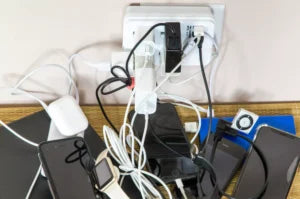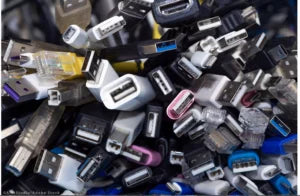What has been asked for years is finally a reality, the single charger is on the way. Learn about risks and possible implications
After much time and discussion, the Radio Equipment Directive becomes reality in the European Union and with it also the single battery charger. 
A topic that has been debated for over 10 years (not only at an institutional level) is therefore about to become reality in just under a year.
Single charger
A topic addressed many times in the last 10 years by the European Council, it is finally starting to become reality, thanks to a law decree that establishes more stringent regulations, valid throughout the European territory starting from autumn 2024.
At the center of the issue of the single charger is the issue of charging small to medium electronic devices (a vast set of hardware, ranging from Bluetooth headphones to laptops).
A topic that is now reality, thanks to a modification of the EU directive on Radio Equipment Device and the publication of timescales within which the devices in question must be adapted.
Autumn 2024 precisely for medium-small devices, such as smartphones and tablets, and up to 40 months more for larger devices, partly to be redesigned or at least re-studied like laptops.
 The reasons for the single charger
The reasons for the single charger
The objective of this law is to reduce the volume of electronic products produced and consequently that of waste.
The numbers are in fact emblematic and speak of 250 million euros saved by consumers per year and at least 11,000 tons of electronic waste per year.
Great numbers that are worth the effort and commitment of the European Council, for a negotiation that took more than 10 years to become reality.
Customers
Great satisfaction from the point of view of consumers, obviously, who will finally be able to reduce the number of chargers they have to store, transport and purchase every year.
Convenience and savings for many users, which, multiplied by the number of devices owned by each person, explain the total volumes and the interest in this choice very well.
“Today we have made the common charger a reality in Europe! European consumers have long been frustrated with multiple chargers piling up with each new device. Now they will be able to use a single charger for each of their portable electronic devices,” said Alex Agius Saliba , Maltese socialist MEP and rapporteur for the European Parliament on the single charger directive. “The agreement is a milestone after more than 10 years of work on this directive.”
Unico battery charger, what does it consist of 
The choice obviously went for the USB-C connector, the latest "release" in the series of "small" connectors designed for electronic devices.
The USB-C connector is the one with an oval shape, with rounded edges and can be recognized because it does not have a predefined installation direction but can be inserted in both directions.
From a power supply point of view, the European Council's idea is to push for intelligent power supplies that can calibrate the output amperage based on the device they are connected to.
This will effectively allow the same device to power both the new generation smartphone equipped with "super charging" functions and the older device which has a more limited charging and battery capacity.
What devices are involved?
Virtually all portable ones, especially: Cell phones, tablets, e-readers, earbuds, digital cameras, headphones and headsets, video game consoles, rechargeable portable speakers, action cameras and laptops.
What brands are involved?
Also in this case practically everyone, or at least all those who want to continue selling in the European Union.
Therefore the most common brands will be involved, from Samsung to Huawei, from Oppo to Realme, from Sony to Nintendo and obviously also Apple.
The "Apple" devices are in fact those that will probably have to adapt the most to this regulation and give up for the first time an exclusivity and diversity very often desired and sought after by the Californian brand famous for iPhone and beyond.
Apple
“From 2024, if Apple wants to sell its devices in the EU, it will have to adopt the USB-C charger. We were also very clear with them about this, we were in Cupertino and told them."
MEP Agius Saliba
The USB-C universal charger rule “applies to everyone, it is not meant to go against anyone”.
Thierry Breton , European Commissioner for the European Market.
The political input towards Apple was very clear; now everything passes into the hands of the Cupertino company which will have to decide quickly whether to create two different product lines, one for the European market and one for the rest of the world or whether to unify the connector on a global level and make the whole world benefit of the "forcing" to which the European Union has pushed it.
 Evolution of the unique charger
Evolution of the unique charger
Not just an intervention designed on the USB-C port but a complete project, which extends over time and which will also unify new technologies.
This forced adoption could in fact push manufacturers to insist on wireless charging and also in this area the European Commission is already ready to issue unique directives.
All of this is part of a broader plan that aims to reduce electronic waste and the worrying and increasingly widespread phenomenon of planned obsolescence.
First of all, the labels and descriptions will also change, the aim is to clearly explain to customers the charging instructions for the new devices, in order to make the use of single chargers for various devices simple and usable.
Following this, the focus will move to the electronics of the devices. The EU executive will in fact dedicate itself to a complete study on a more eco-friendly design of new devices, with the aim of making access to the market for repairs, proprietary spare parts and end-of-life recycling of the electronic device easier.
The future
When technology creates fragmentation, it is the task of users and politicians to push towards a single solution. This has already happened many times in history (perhaps the first case was that of VHS), it will happen more and more if specially created super-partes bodies do not take steps to keep this possible drift under control.







